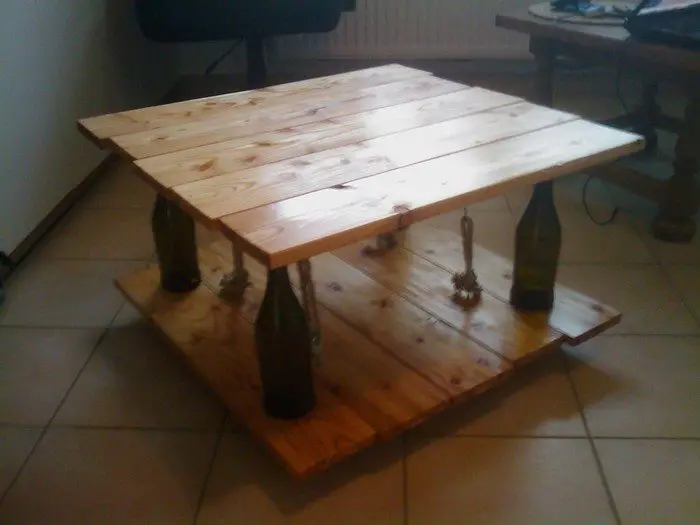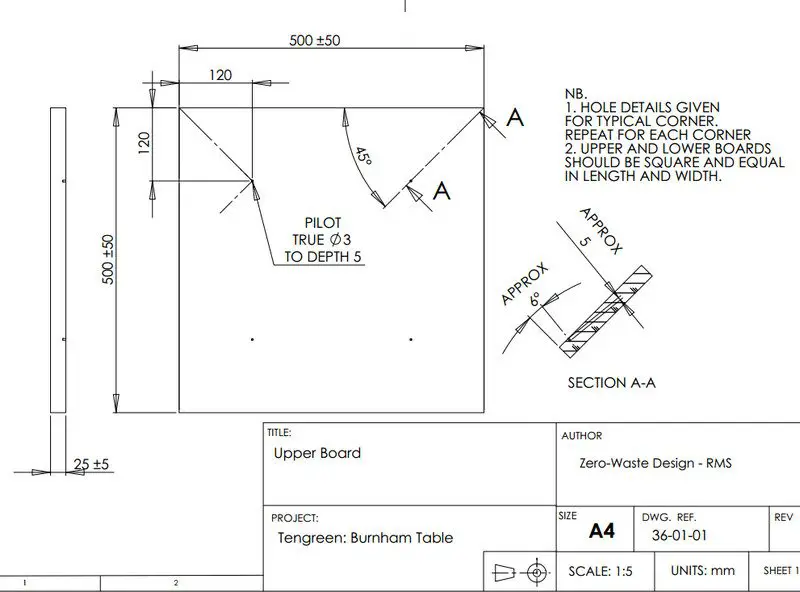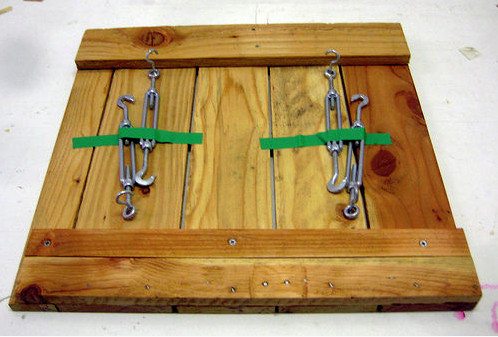Contents
Another project by Roy Shearer of Zero Waste
The base design for this table is released under a share-alike/attribution CC license by Zero-waste Design. I will happily make up kits to order for UK customers.

Ten Green is a shelving and table system. It uses commonly available waste materials. The range started with shelving/table modules and continued into small shelving units, then big shelving units, and now on to coffee tables.
In this post, I’ll share how to build a Ten Green coffee table. You can use any four bottles of similar height and any found timber, including pallet timber. Just adapt the table dimensions to suit the timber sizes you have available.
Click on any image to start lightbox display. Use your Esc key to close the lightbox.![]()






Step 1: Get your hardware:


For a single table you’ll need the following items:
Four turn-buckles. I used the smallest I could find, which are 14mm OD at the buckle and 5mm OD at the threads. They should be available from any decent hardware store. Mine came from Screwfix.
Four screw eyes and four screw hooks. These need to match the turn-buckles.
Depending on the height of your bottles, you may need some “S” hooks to help the strainer reach between the upper and lower hooks.
Two pieces of reclaimed wood at least 25mm thick. Here I used some small pallets. Ensure the timber is rot free. Trim the boards square and to the dimensions required and sand to a smooth finish. If the board is constructed out of many pieces joined together, as in the example, ensure all joints are well secured as the board will be subjected to bending and shear forces.
Drill four holes and attach the hardware as described in the layout image. I can not emphasize enough how great Forstner bits are for this job!



Ensure that the screw eyes and screw hooks are securely held into the timber as they may be subjected to anticlockwise twisting – you may require pliers or a similar tool to fully screw in the hardware. If the timber does not allow a secure fixing, consider gluing in the fixings using a two-part resin or using bolt through fixings.
Step 2: Get the bottles
You also need four bottles. All the same brand/height/shape is preferable. Wash them thoroughly in hot soapy water. I think the clear ones look the best.
In this example, I used some rather lovely bottles by Wodka Wanessa.
Step 3: Place your first board

Start with the top board. That’s the board without holes drilled through it. Place this upside down on a clean firm surface so that the screw eyes are facing up.
Continued Page 2…






